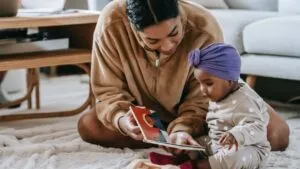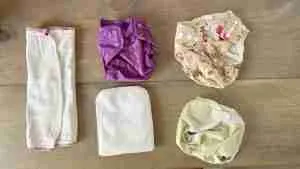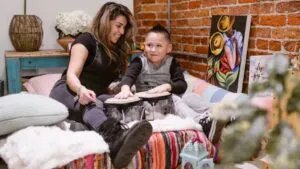
Montessori Potty Training: 11 Proven Tips
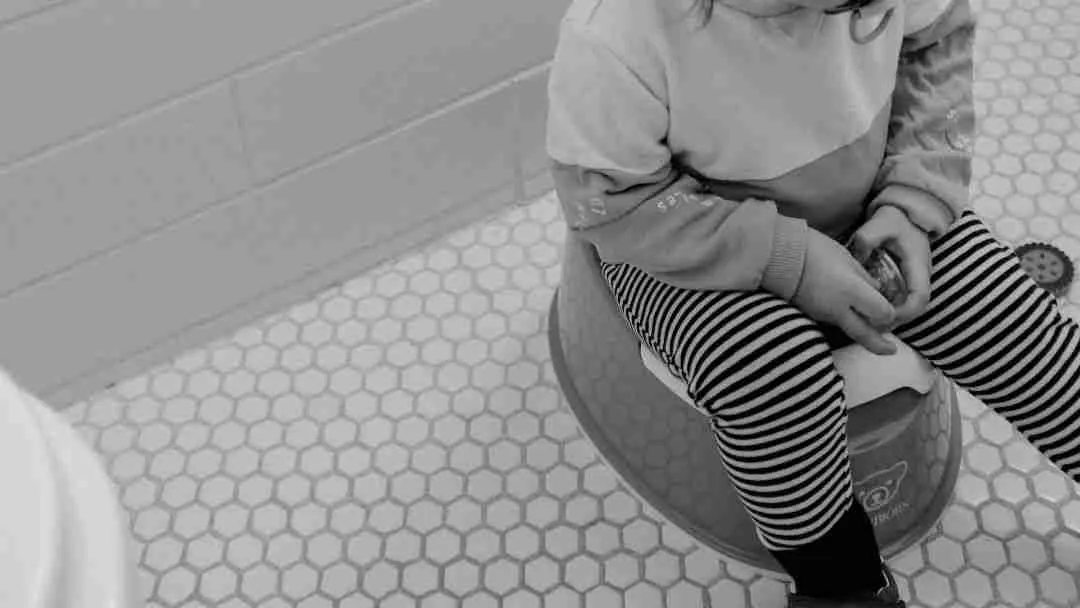
*Disclosure: I only recommend products I would use myself and all opinions expressed here are our own. This post may contain affiliate links that at no additional cost to you, I may earn a small commission. Thank you for your support!
Share this post
As of the date of this post, our daughter is 20 months old and I can happily and proudly say that she is almost 100% potty trained.
Montessori potty training has helped our daughter take an active role in her own toilet training process.
We followed the Montessori potty training approach and we set up the right environment to help her become independent as she learns to use her potty.
I am going to share my experience, both as a mother and as a Montessori Guide to help your child go potty all on their own. In no time, your child will become fully independent and take charge of their own toileting needs.
And just FYI, in the Montessori setting we call it toilet learning, but since most people use the term potty training, I will use potty training throughout this article.
Quick Summary
Follow these steps to help your child learn how to use the toilet all on their own:
Let your child watch you go potty.
Prepare the environment.
Understand your child’s readiness to begin potty training.
Demonstrate bathroom routines.
Create a consistent potty training routine.
Choose the right type of clothes.
Let your child take initiative.
Help them throughout the process.
Reinforce good habits.
Handle accidents calmly.
Switch to underwear.
Montessori potty training in 11 steps
Montessori potty training will foster your child’s confidence and autonomy.
The Montessori potty training method will foster a sense of responsibility that teaches your child body awareness and creates a positive and empowering experience as they learn to use the toilet on their own.
Here are 11 steps you can start using today to successfully potty train your child.
1. Let your child watch you go potty
We began potty training our daughter when she was just a few months old. And not by sitting her on the toilet, but by allowing her to observe us potty.
Children learn so much just by observing. An important step in their potty training journey is to allow your child to observe you while you use the bathroom.
This helps them learn the steps involved when you take care of business, such as sitting on the toilet, using toilet paper, flushing, and washing your hands.
You are modeling the process of using the toilet and they see firsthand how these actions are performed and understand that it is a normal and natural part of everyday life.
Take them to the restroom with you and narrate what you are doing, like “I am peeing” or “I am pooping and now I am going to wipe.”
This will set a good foundation for the potty training process.
2. Prepare the environment
Here is our simple setup:
- Child-sized toilet in our restroom.
- An acrylic mirror so she can see herself potty.
- No books or toys that can distract her.
That’s it! You should keep the potty training environment simple.
Before you begin potty training, place the potty in your bathroom and allow your child to explore and become comfortable with it before they can use it.
Let your child touch and feel their potty. If your child is walking, let them practice sitting on the potty fully clothed initially.
Sitting on the potty and standing up is a hard skill to master since they are sitting without assistance, so encourage your child to practice this skill.
I recommend you buy a potty that is appropriate for your child’s height. Your child should be able to sit on the potty comfortably with both feet touching the ground.
I also suggest you add a mirror so your child can see themselves go. The mirror will help your child observe their own facial expressions and body language, and develop a sense of self-awareness.
“This is good stuff, but why not use books and toys?”
This is a good question that I get a lot. Learning how to use the potty is tough for toddlers. You need to isolate the process and focus on only this skill.
Books and toys may sound like fun but they only distract your child from learning how to potty. To effectively teach your child how to use the potty, only focus on this specific skill and eliminate all distractions.
3. Understand your child’s readiness to begin potty training
How do you know your child is ready to begin potty training? At what age should you potty train a child? The truth is that there is no ideal age to start potty training your child.
Instead of waiting for the perfect time to start potty training, look for signs of physical and cognitive readiness.
Observe your child and see if they show an interest in the bathroom or if they sit on their potty when you use the toilet.
A good sign that tells you they are ready to begin toilet training is if they imitate your actions in the bathroom.
Our daughter began sitting on her potty when she was about 14 months old and since then we have become more intentional about toilet training.
We noticed that she was interested in using her potty so all we did was assist her in this process.
4. Demonstrate bathroom routines
Every time we had to pee or poop, we invited our daughter to see how it was done. Eventually, she learned the concept and began sitting on her potty on her own.
As I mentioned earlier, your child will naturally begin using their potty when they see you use the toilet.
So involve your child in your daily bathroom routines and let them join you and explain each step in simple terms while you show them how to clean yourself after you take care of business.
And don’t forget to wash your hands. Your child needs to understand proper hygiene, so tell them why they need to wash their hands after they pee and poop.
And don’t overcomplicate things. Use simple language to explain how to use the toilet or better yet, walk them through how to use the toilet.
Engage in a simple conversation like “I need to pee, let’s go to the restroom and show me how you pee,” or “I need to wipe, show me how you wipe.”
Remember that you are modeling this behavior and your child will learn a lot just by watching you go through the motions.
5. Create a consistent potty training routine
Creating a schedule for potty training is going to help you and your child navigate this process a lot smoother.
Try to set specific times throughout the day for your child to sit on the potty. For example, take your child to the potty when they wake up, before and after meals, or before they go to bed.
Most likely they won’t pee or poop in the potty but at least they will begin to understand that this is where they go if they need to pee.
The goal here is to help them make the connection between peeing or pooping and the potty.
Something that helped us a lot was switching to underwear (more on this later). We would change our daughter’s diaper in the morning and then put on underwear.
Then every five minutes or so, we would say, “Let’s go to the toilet” and then we would take her to her potty. At first, she didn’t pee, but after several days of following this routine, she finally peed!
It’s OK if they don’t get it right the first time, this is a learning process for you and your child. Just stay consistent with your approach and celebrate small successes.
6. Choose the right type of clothes
The ultimate goal of Montessori potty training is for your child to become independent and go potty on their own.
Believe it or not, the clothes your child wears make a huge difference.
It is time to ditch all those beautiful onesies and clothes with lots of buttons. Your child does not have the skills to unzip or unbutton their clothes.
It is easier for them to learn how to lower their pants, shorts, or underwear. So choose clothing that your child can easily remove, like elastic-waist pants or dresses without complicated closures.
If you want, you can use training pants or pull-up diapers so your child can learn how to take them off when they are potty training.
However, I am not a big fan of pull-ups and would rather use underwear. Again, more about underwear later.
7. Let your child take initiative
The only way your child will become independent is if you let them take initiative.
Help your child to recognize their body’s signals for needing to use the potty. The way we helped our daughter learn these signals was by telling her, “When you need to pee, you will feel pressure on your stomach,” and then we would press on her stomach.
She then learned to touch her stomach every time she needed to use the toilet.
We also helped her learn the word “pee.” It was easier for her to pronounce the word “pee,” so we used the word pee and not poop.
You see, the goal in this step is to encourage your child to communicate their need to use the potty by using words, gestures, or a specific signal that you both understand.
8. Help them throughout the process
I said it before and I will say it again. Toilet training is a hard skill for your child to master. They need your help throughout this challenging and exciting journey.
Guide your child to the potty, help them get undressed and sit on the potty, give them a piece of toilet paper or baby wipes, and show them how to wipe.
Don’t forget to be supportive and encouraging throughout the process and make sure that your child feels safe and reassured.
Once your child is more capable and confident in using the potty independently, you can begin to decrease your assistance.
9. Reinforce good habits
I have to tell you this right off the bat: DO NOT PRAISE YOUR CHILD!
I know that as a parent, we want to say things like “Good job, you did it!” Or you may want to offer a cracker or stickers for going in the potty.
Sure, all these things are nice to give to your child, but remember that a cookie or a sticker should not be the motivation behind learning how to use the potty.
Instead, you should focus on fostering intrinsic motivation in your child rather than relying solely on external praise.
Encourage your child to feel a sense of accomplishment and pride in their own achievements.
Instead of praising your child, give them some feedback about their actions. For example, instead of saying “Good job!” when they use the potty, you can say something like, “You listened to your body and used the potty all by yourself,”
This helps your child connect their own efforts and actions with the positive outcomes they experience.
You can also ask your child to take more actions like, “Are you done peeing? Let’s empty and clean your potty,” or “After you pee/poop, you need to wipe.”
This is something we do with our daughter all the time. Whenever she pees, we tell her, “Bend over and touch your toes so I can wipe you.”
And we do this in front of the mirror so she sees herself getting wiped and learns how to wipe on her own.
10. Handle accidents calmly
Yes, your child will have many accidents as they learn to control their bowel movements.
It is important that you stay calm and composed when your child has an accident. If you react negatively, your child will feel ashamed or worse, scared.
Here is the thing. Imagine you are learning a new skill and you make a mistake. Would you rather have someone yell at you or tell you that it is OK and try again?
The same goes for your child. Stay positive throughout this journey and let your child know that you are there to help.
Our daughter had so many accidents when we began toilet training. But instead of saying “Eww, you peed,” we said “I see that you peed and that’s OK. Let’s go sit on the toilet.”
If your child pees on the floor, they can help you clean so they learn the importance of cleaning up after themselves.
Poop is a bit different. You should clean up their poop, otherwise, your child will think it is chocolate.
So from parent to parent, use accidents as learning opportunities to create a new plan of action.
11. Switch to underwear
Trust me on this one. Switching to underwear will help your child potty train a bit faster. Pull-ups and training diapers work but are not ideal.
Why?
Well, the reason why I used underwear and not pull-ups or training diapers is that diapers absorb all the pee.
That’s good, right?
Not when it comes to potty training. Underwear does not absorb fluids, so when your child pees or poops, they will feel very uncomfortable.
This is a natural consequence they will have to learn: “When I pee on my underwear, I feel wet.” So what should they do to not feel uncomfortable in wet underwear? Use the potty!
This process is going to take time. They will soil their underwear many times before they successfully tell you that they have to potty.
Here is a parenting tip. If you are not ready to switch to underwear, you can use cloth diapers. Cloth diapers will also stay wet and can help your child make the connection between peeing and feeling wet and uncomfortable.
BONUS: Stay consistent and patient
Consistency is key in Montessori potty training, so follow your routines to make potty training a success.
Remember to provide gentle guidance and support as your child learns to use the potty on their own. This is going to take time but sooner than later, you will celebrate success.
What to do next?
It is possible to potty train your child by the time they turn two years old. Follow these potty training tips and soon your child will start using the toilet on their own.
I created a video on potty training so check it out if you need some visuals. And if you are ready to switch to underwear, check out the list of underwear for potty training I recommend.
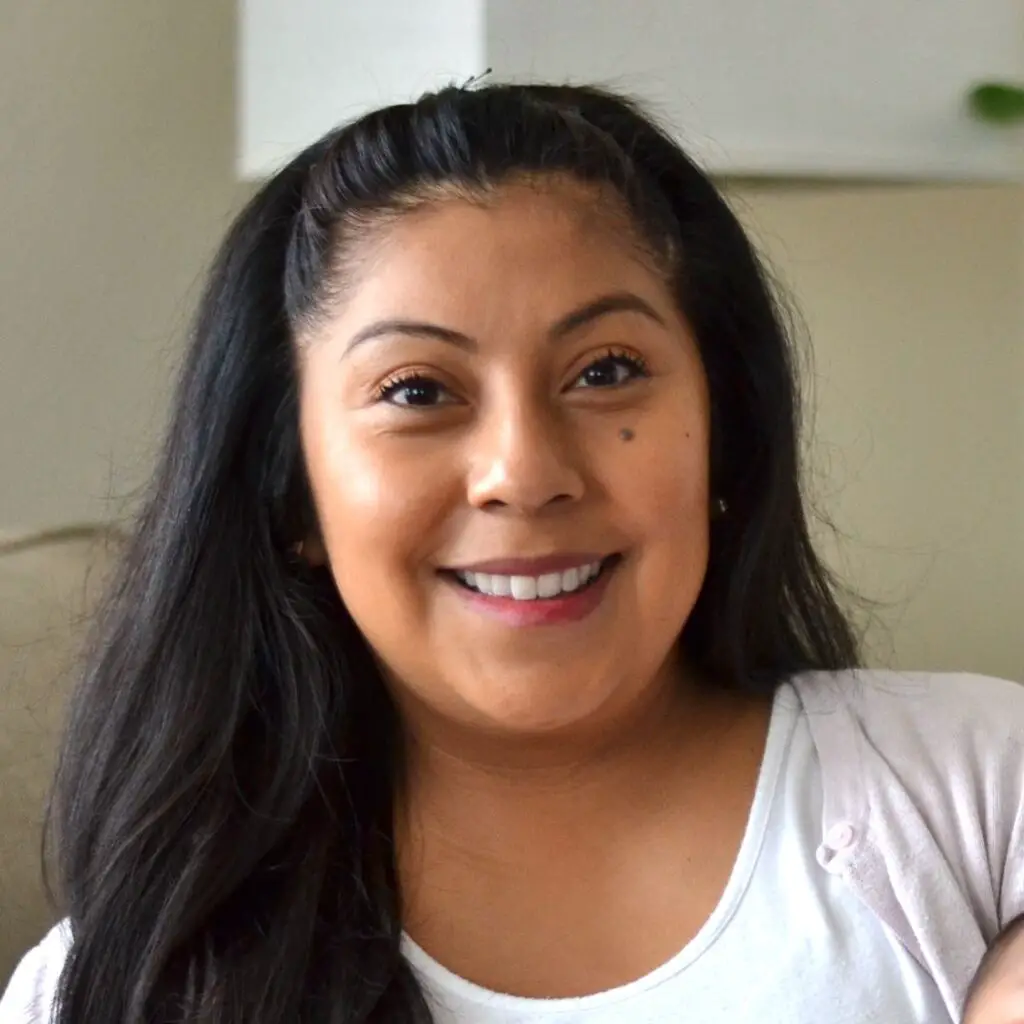
Hello, I am Leslie. I am on a mission to help you support the growth and development of your child. With the right tools and proper guidance, you can navigate parenthood with confidence and assertion! My goal is to equip you with knowledge to help you construct a strong foundation for your child’s life.
Suggested articles
You May Also Like

How To Handle Terrible Two Tantrums: 9 Proven Tips
How do you handle terrible two tantrums? Simple, help your child regulate their emotions, offer choices, and promote open communication.
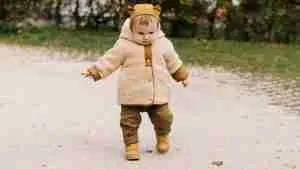
Should Babies Wear Shoes? 3 Life-Changing Things To Know
Should babies wear shoes? According to the American Academy of Pediatrics, babies should only wear shoes once they begin walking.
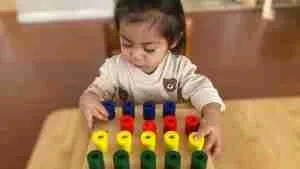
11 Fun 1 Year Old Activities To Support Development
Wondering what activities you can do with your toddler? Here are 11 fun and engaging 1 year old activities that will surely help develop your child’s skills.




